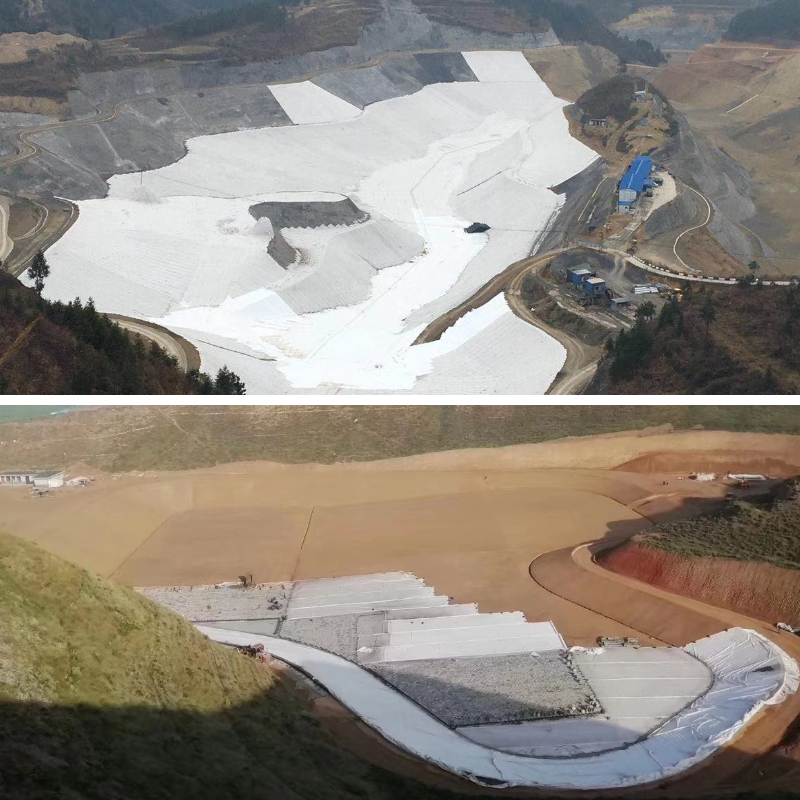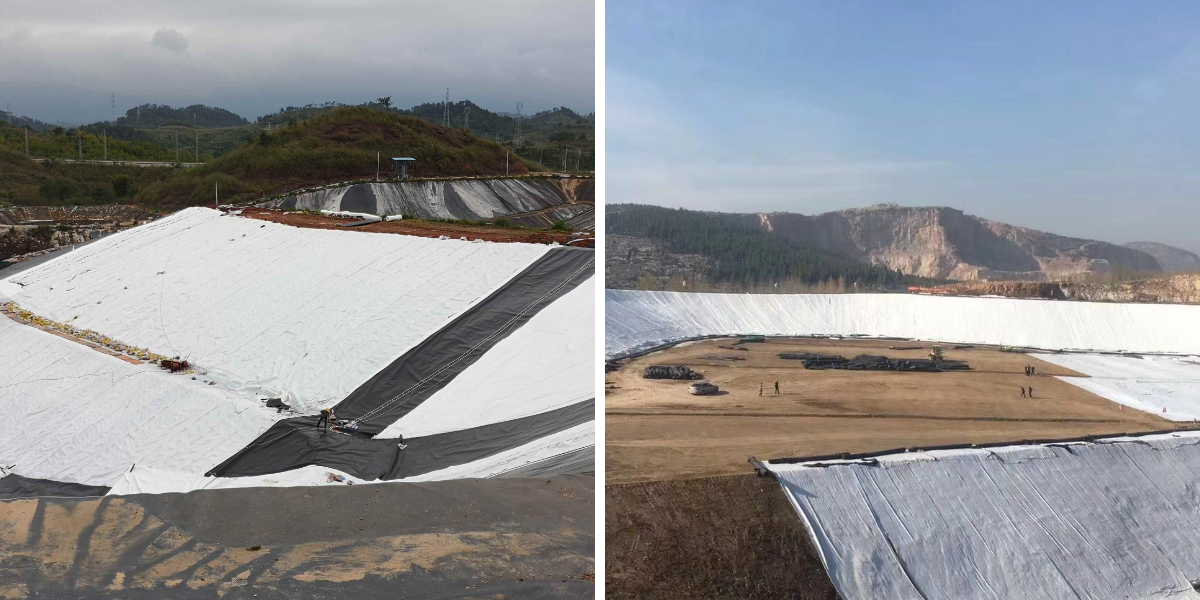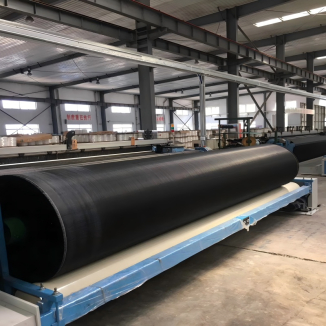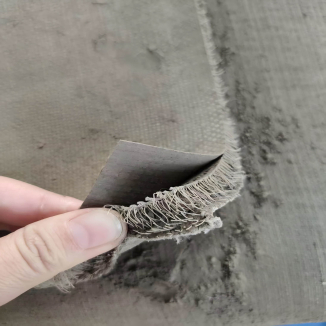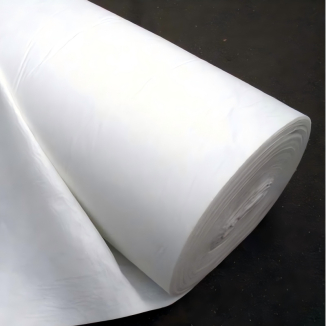Geotech Filter Cloth
1. High strength: high tensile, tear resistant, and bursting strength.
2. Durable and corrosion-resistant: Made of synthetic fibers, it is resistant to chemical corrosion, microorganisms, and insect infestations, and has a long service life in soil.
3. Good permeability: It has good permeability and can effectively drain and filter water.
4. Easy construction: lightweight, roll supply, transportation, and laying are all very convenient, which can greatly shorten the construction period.
5. High cost-effectiveness: It can replace traditional materials such as sand and gravel filter layers and isolation layers, save material and labor costs, and improve engineering quality.
Product Introduction:
Geotech Filter Cloth is a type of textile used in civil engineering. It is a permeable cloth like material made of synthetic fibers (such as polypropylene, polyester, nylon, etc.) through processes such as needle punching or weaving. It is hailed as a revolutionary material in civil engineering, as it plays a crucial role in enhancing engineering performance, extending service life, and reducing costs.
Main functions
Geotextiles play four main roles in engineering, and sometimes a single geotextile can have multiple functions simultaneously:
1. Separation
Function: Isolate two types of geotechnical materials with different physical properties (such as gravel and soft soil) to prevent them from mixing with each other.
Example: When laying railways or highways on soft soil foundations, laying geotextiles can prevent the gravel layer from sinking into the soft soil and also prevent the soft soil from pouring into the gravel layer, thereby maintaining the integrity and bearing capacity of each layer and reducing settlement.
2. Filtration
Function: While allowing liquid (water) to pass vertically, it effectively prevents excessive loss of soil particles.
Example: Used for the back of drainage ditches, revetments, or retaining walls. Water can be smoothly discharged through geotextiles, while soil is preserved, preventing soil erosion and structural instability.
3. Drainage
Function: Collect and transfer liquid (water flow) within its own plane to achieve horizontal drainage.
Example: Used for drainage systems in roadbeds, tunnel linings, and underground structures. It can collect and guide water to drainage pipes, reducing the water pressure of the surrounding soil.
4. Reinforcement
Function: Utilizing its high tensile strength to disperse loads, improve the stress distribution of soil, and thereby enhance the strength and stability of soil, similar to steel bars in reinforced concrete.
Example: Used to reinforce structures such as embankments and retaining walls on steep slopes and soft soil foundations to prevent landslides and collapses.
5. Protection
Function: As a buffer layer, it prevents or reduces other materials (such as waterproof geomembranes) from being punctured or damaged by sharp objects.
Example: Laying geotextiles on both sides of the anti-seepage geomembrane in a landfill can protect the membrane from being pierced by the gravel below or the garbage above.
Main types
According to different manufacturing processes and structures, geotextiles are mainly divided into two categories:
Manufacturing process: Synthetic fibers are randomly arranged and fixed by mechanical entanglement (needle punching), thermal bonding, or chemical bonding.
Features: It looks like a blanket, isotropic (with similar performance in all directions), and has good filtering, isolation, drainage, and protection functions. Needle punched non-woven fabric is the most common type.
Common applications: isolation layer, filter layer, drainage layer, protective layer.
Manufacturing process: It is made by interweaving two sets of parallel yarns (or flat yarns) on a weaving machine, with a structure similar to a woven bag.
Characteristics: It has high tensile strength and modulus, and anisotropy (there may be differences in longitudinal and latitudinal performance). Its main function is to reinforce and stabilize, but its filtering and drainage performance is poor.
Common applications: High strength reinforcement engineering is required, such as soft foundation reinforcement, steep slope stability, retaining walls, etc.
In addition, there are special types such as knitted geotextiles and composite geotextiles used to meet specific engineering requirements.
Product Parameters:
project | metric | ||||||||||
Nominal strength/(kN/m) | |||||||||||
6 | 9 | 12 | 18 | 24 | 30 | 36 | 48 | 54 | |||
1 | Longitudinal and transverse tensile strength / (kN/m) ≥ | 6 | 9 | 12 | 18 | 24 | 30 | 36 | 48 | 54 | |
2 | Maximum elongation at maximum load in longitudinal and transverse directions/% | 30~80 | |||||||||
3 | CBR top penetration strength /kN ≥ | 0.9 | 1.6 | 1.9 | 2.9 | 3.9 | 5.3 | 6.4 | 7.9 | 8.5 | |
4 | Longitudinal and transverse tearing strength /kN | 0.15 | 0.22 | 0.29 | 0.43 | 0.57 | 0.71 | 0.83 | 1.1 | 1.25 | |
5 | Equivalent aperture O.90(O95)/mm | 0.05~0.30 | |||||||||
6 | Vertical permeability coefficient/(cm/s) | K× (10-¹~10-), where K=1.0~9.9 | |||||||||
7 | Width deviation rate /% ≥ | -0.5 | |||||||||
8 | Unit area mass deviation rate /% ≥ | -5 | |||||||||
9 | Thickness deviation rate /% ≥ | -10 | |||||||||
10 | Thickness coefficient of variation (CV)/% ≤ | 10 | |||||||||
11 | Dynamic perforation | Puncture hole diameter/mm ≤ | 37 | 33 | 27 | 20 | 17 | 14 | 11 | 9 | 7 |
12 | Longitudinal and transverse fracture strength (grab method)/kN ≥ | 0.3 | 0.5 | 0.7 | 1.1 | 1.4 | 1.9 | 2.4 | 3 | 3.5 | |
13 | Ultraviolet resistance (Xenon arc lamp method) | Longitudinal and transverse strength retention rate% ≥ | 70 | ||||||||
14 | Ultraviolet resistance (fluorescence UV lamp method) | Longitudinal and transverse strength retention rate% ≥ | 80 | ||||||||
Product Applications:
1. Water conservancy engineering
Anti seepage reinforcement of dams, reservoirs, and water channels.
River slope protection and coastal protection to prevent soil erosion.
2. Transportation Engineering
Strengthen the roadbed of highways and railways to reduce settlement and cracks.
Waterproof and drainage systems for tunnels and subways.
3. Environmental Engineering
Lining and covering of landfill sites to prevent leachate contamination.
Wetland restoration and artificial lake anti-seepage.
4. Construction Engineering
Waterproofing and drainage of basement and rooftop garden.
Soft soil foundation treatment to improve bearing capacity.
5. Agricultural Engineering
Optimization of farmland drainage and irrigation systems.
Fish ponds and reservoirs are impermeable.
Geotextile, as a new type of geotechnical engineering material, effectively solves many problems in traditional civil engineering through its functions of isolation, filtration, drainage, reinforcement, and protection. It improves the stability, safety, and durability of engineering, while saving costs and resources, and is an indispensable and important component of modern engineering construction. Choosing the appropriate type and specification of geotextile is crucial for ensuring the success of the project.





